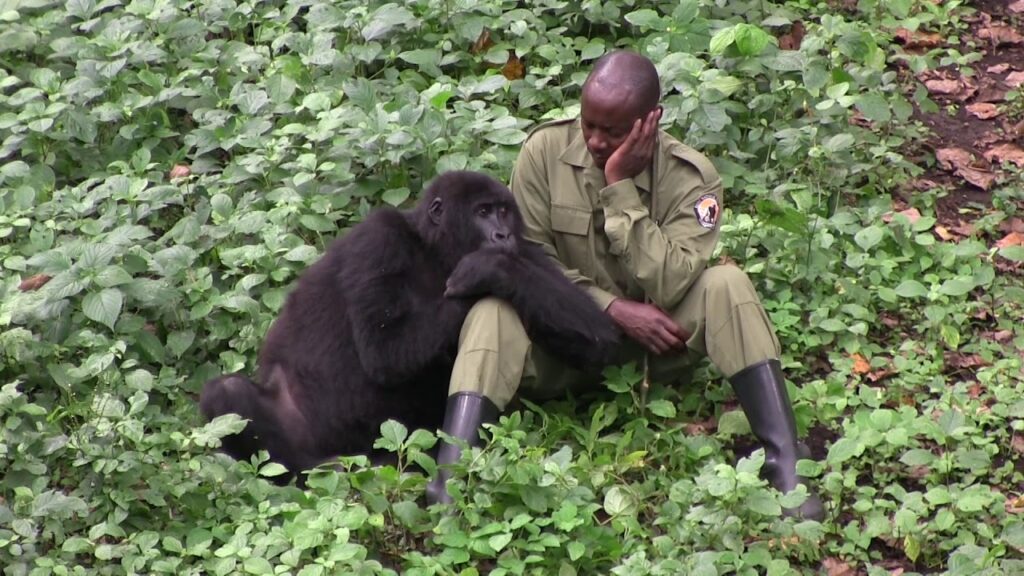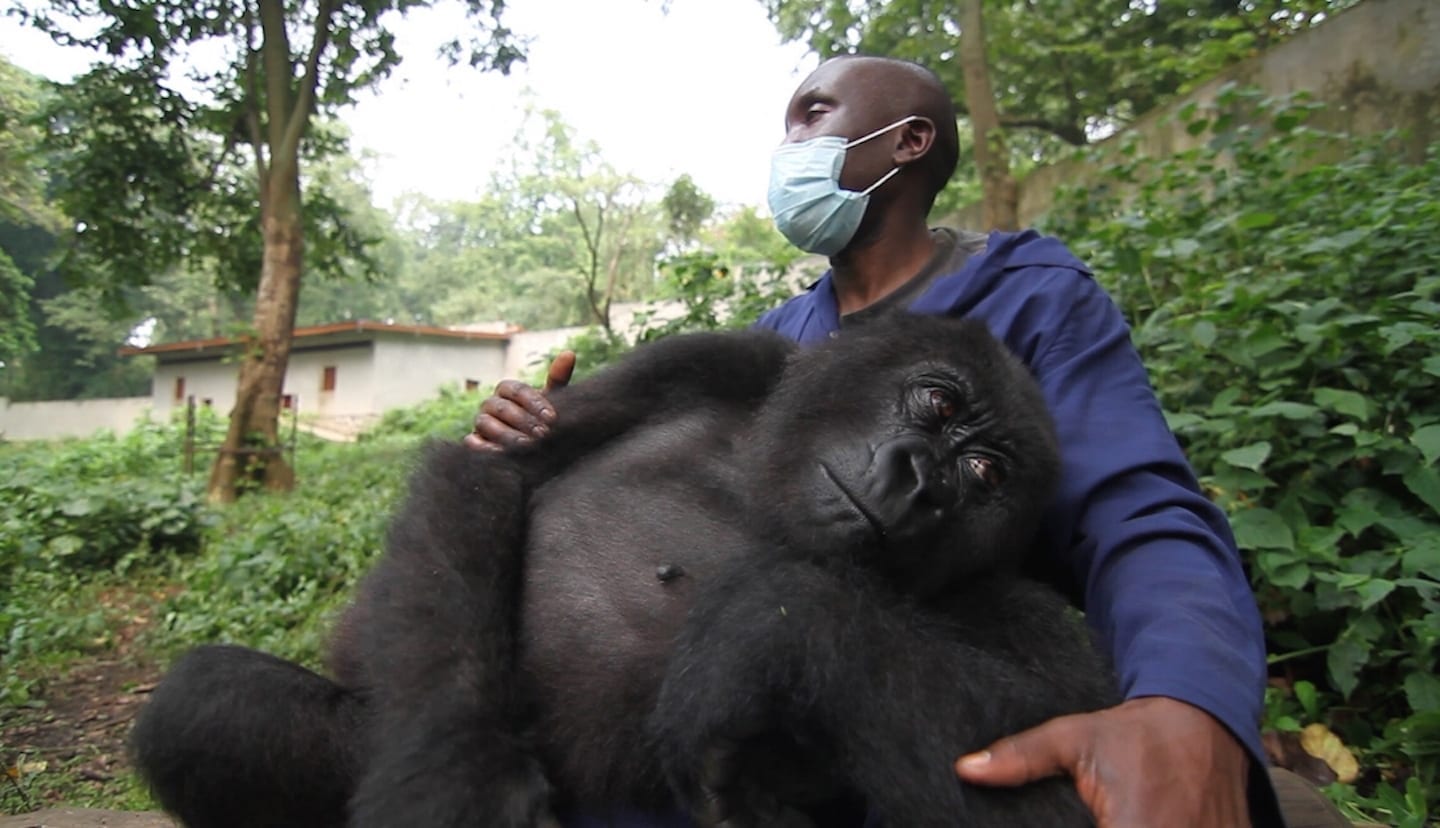Are Gorillas Friendly
Are Gorillas Friendly: Mountain gorillas are gentle, clever, robust, and charismatic, indicating they are a sociable species. Furthermore, we possess a close genetic similarity of 98% DNA. Dian Fossey, an American primatologist, found greater comfort in the company of rare mountain gorillas than among humans, which is really remarkable.

Mountain gorillas are generally amicable, provided one does not intrude upon their territory or harm their offspring, which would provoke them. Mountain gorillas exhibit aggression alone when they perceive a threat; when provoked, they respond with forceful bites, capable of fracturing ribs, as well as thumping and pulling their assailants. Failure to receive timely assistance may result in a gorilla attack; therefore, we always recommend that our clients trek with a guide and adhere to the directions provided by the guide.
It is important to note that before wild mountain gorillas become friendly or habituated, they must first undergo a training procedure to acclimate to human presence, including researchers and rangers. This process can take a minimum of two years to facilitate eye contact between gorillas and humans. Nonetheless, despite a gorilla group being habituated, guests must adhere to established norms and regulations during the Gorilla Trekking and Habituation experience.
Presented below are certain norms and requirements to adhere to;
- Do not attempt to get away if a gorilla charges, as this is quite dangerous.
- Maintain a subdued volume when in the presence of gorillas.
- Avoid direct eye contact with gorillas.
- Maintain a distance of 7 to 10 meters from gorillas.
- Do not touch; these gorillas are wild.
- Adhere to the directives provided by the guide.
- Trackers are given one hour while trekking gorillas.
- Do not try to get away if a gorilla charges at you, as it poses a significant risk to your life.
- Do not use cameras with flash during trekking safaris, as mountain gorillas are averse to it and may perceive it as a threat.
- If a mountain gorilla charges at you, adhere to your guide’s instructions: walk away without making eye contact, squat down as if consuming grass, and remain still until the gorillas have passed.
- Habituated gorillas are amicable and accustomed to human interaction, a process that requires much effort and involvement from researchers, guides, and animal behaviorists.
- The nations that host mountain gorillas include Uganda, Rwanda, and the Democratic Republic of Congo, each possessing many habituated gorilla groups that tourists can visit daily.
When are gorillas aggressive?
Gorillas are predominantly tranquil primates; nonetheless, they can exhibit aggression. Instances of gorilla aggression
Lonely males seeking a collective
As young male gorillas mature into silverbacks, they may aspire to lead their own gorilla family. If they are unable to challenge the dominant silverback of their group or attempt and fail to do so, they are expelled or leave the group to seek out another troop to dominate. During this period, solitary male gorillas exhibit considerable discontent and, consequently, aggression.
Silverback gorilla safeguarding his troop and asserting power
The silverback gorilla will exhibit aggression if he perceives a threat to the protection of his group from an encroaching species. Tourists on the gorilla tour are urged to maintain a distance of at least 7 meters from the gorillas and to avoid eye contact with the silverback, since it may be perceived as a challenge to his authority. Additional guidance about interactions with gorillas is provided here.
The silverback gorilla exhibits aggression when confronted by another silverback gorilla seeking dominance within the group.
Contentious or problematic persons within the group
Similar to a family or society, where a bothersome individual may exist, gorillas can also have a member recognized for their aggressive disposition. During gorilla trekking in Africa, guides are aware of problematic individuals and will advise tourists to maintain distance. In Uganda’s Bwindi Forest Park, within the Mishaya gorilla family, one irascible member is recognized for its kicking behavior, prompting people to maintain a safe distance or exercise heightened vigilance. This male bears scars on his face and shoulders, indicative of his aggressiveness.
Where Can I find Gorillas In Africa
Four subspecies of gorillas constitute two species: the Eastern and Western gorilla species. The Eastern gorilla encompasses the highly coveted mountain gorillas and eastern lowland gorillas, whereas the Western gorilla comprises the Cross River and western lowland gorillas. Mountain gorillas can only be observed in three locations: Uganda, Congo, and Rwanda.
In Uganda, the sole destinations for mountain gorilla safaris are Bwindi Impenetrable National Park and Mgahinga National Park. In Rwanda, these remarkable apes inhabit Volcanoes National Park, while in the Congo, they are exclusively found in Virunga National Park.

Traveling to Uganda, Congo, and Rwanda to observe mountain gorillas necessitates possession of a valid gorilla permit. In Uganda, mountain gorilla tracking permits can be reserved for USD800, in Rwanda for USD1500, and in Congo for USD450 per person per day.
Best months for gorilla trekking
June
June typically signifies the commencement of the extended dry season in Uganda and Rwanda. This month typically experiences minimal precipitation as we approach the driest month of the year. Throughout this month, all safari activities are permissible in both Uganda and Rwanda. For individuals interested in mountain gorilla trekking, late June is an ideal period for exceptional mountain gorilla safaris in Uganda’s Bwindi Impenetrable National Park, Mgahinga Gorilla National Park, and Rwanda’s Volcanoes National Park.
July
July is an ideal month for individuals seeking to explore Uganda through Uganda Tours, wildlife safaris, and gorilla trekking holidays. The average temperatures during this month typically range from 16°C (61°F) to 26°C (79°F), rendering it optimal for safaris. All premier gorilla trekking sites, such as Bwindi Impenetrable National Park and Volcanoes National Park, are accessible for trekking during this month.
August and September
Similar to July, the months of August and September are ideal for gorilla trekking in Uganda and Rwanda. The average temperature during these months in Uganda ranges from 16°C (61°F) to 26°C (79°F), while in Rwanda it varies from 14°C (57°F) to 27°C (81°F), rendering this period optimal for exploration of the countries. Gorilla trekking is available in Rwanda and Uganda during these months, along with other premier safari activities in various national parks within these nations.
October
Early October remains an opportune time for gorilla trekking. By the conclusion of October, the brief rainy season commences, and premier gorilla trekking locales such as Bwindi Impenetrable National Park and Volcanoes National Park begin to experience substantial rainfall. Trekking during these months can be arduous due to excessive rainfall, despite some individuals continuing to undertake it
